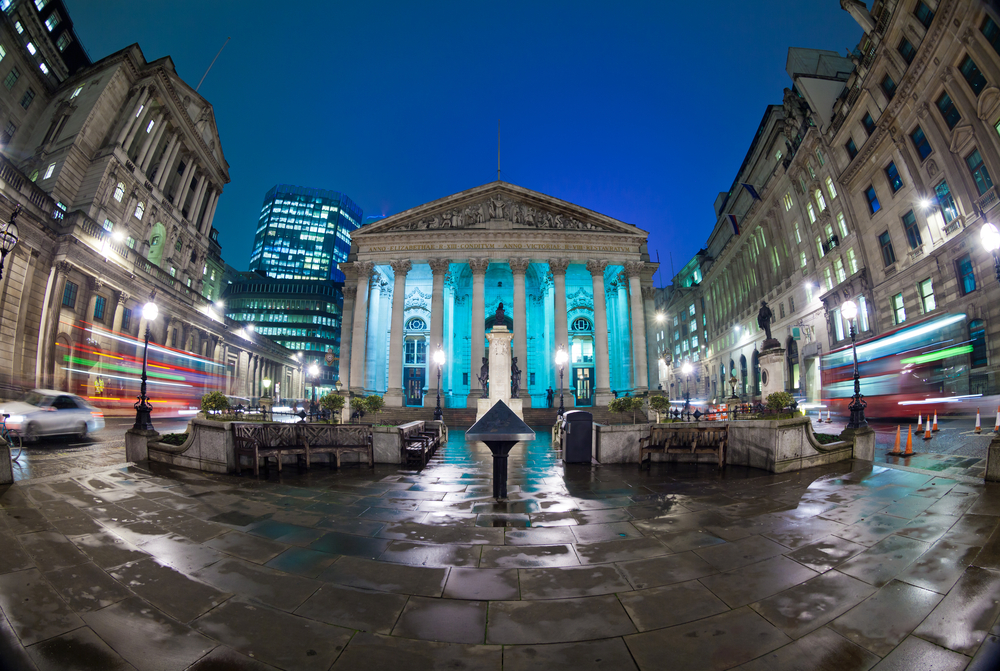The Bank of England is expected to hold off cutting interest rates further in November following higher than expected growth in the UK economy last quarter, but they could go up at the beginning of next year. Britain’s economy grew faster than expected in the last quarter by 0.5%, despite fears that uncertainty following the […]
 The Bank of England is expected to hold off cutting interest rates further in November following higher than expected growth in the UK economy last quarter, but they could go up at the beginning of next year.
The Bank of England is expected to hold off cutting interest rates further in November following higher than expected growth in the UK economy last quarter, but they could go up at the beginning of next year.
Britain’s economy grew faster than expected in the last quarter by 0.5%, despite fears that uncertainty following the Brexit vote could lead to recession.
Howard Archer, chief economist at IHS Global Insight, said that the current resilience of the economy along with the fragility of the pound and increased inflation risks offered “a pretty compelling case for the Bank of England to sit tight for now at least”.
“We still believe suspect that the Bank of England is more likely than not to end up taking interest rates down from 0.25% to 0.10% – and suspect this will probably happen in the first half of 2017. This reflects our belief that the economy will increasingly struggle in 2017 as the uncertainties facing businesses and consumers are magnified by the triggering of Article 50 by the end of March and difficult negotiations with the EU increasing coming to the fore,” he added.
The Bank cut interest rates to a new record low of 0.25% in August as part of a range of measures designed to help boost demand following the vote to leave the EU, warning that third quarter growth could plummet to 0.1%.
Following a stronger than expected performance from the economy, the Bank upgraded its growth forecast in September to between 0.2% and 0.3%, but said another rate cut was potentially on the cards towards the end of the year.
The drop in the value of the pound and the inflation rise of 1% in September since the vote to leave the EU means that there is increasing pressure for interest rates to go up.
However, Archer said it was unlikely the Bank would raise interest rates to try and shore up the pound and limit the potential inflation overshoot.
“The Monetary Policy Committee would only likely consider such action if the pound’s drop became sharp and disorderly. Mark Carney has stated that the Bank of England is prepared to tolerate inflation overshooting its 2.0% target in order to support growth and protect jobs. However, there is a risk that the question could ultimately become just how big an inflation overshoot is the Bank of England willing to tolerate,” he added.
GDP growth
The Office for National Statistics said that GDP was estimated to have increased by 0.5% in the third quarter from July to September compared with growth of 0.7% in the three months to June.
Despite the drop, the figure is higher than the 0.3% rise economists were predicting.
The ONS said there was “little evidence of a pronounced effect in the immediate aftermath of the vote”.
Joe Grice, ONS chief economist, said the data was the “most comprehensive picture so far of the post-referendum UK economy”.
“While quarterly growth has fallen slightly, the economy has continued to expand at a rate broadly similar to that seen since 2015 and there is little evidence of a pronounced effect in the immediate aftermath of the vote,” he added.
Economic growth was largely driven by the strong performance of the services industries, which increased by 0.8% between July and September.
In contrast, output decreased 1.4% in construction and production contracted by 0.4%, with manufacturing down by 1.0%.
The Chancellor of the Exchequer, Phillip Hammond, said: “The fundamentals of the UK economy are strong and today’s data show that the economy is resilient.”
Howard Archer, chief economist at IHS Global Insight, said: “It looks certain that third-quarter growth was also heavily dependent on consumers’ willingness to keep spending, supported by still decent purchasing power and high employment.
“Consumer spending also clearly benefited from the weakened pound encouraging spending by overseas visitors to the UK. The weakened pound also supported foreign orders for UK goods and services.”














